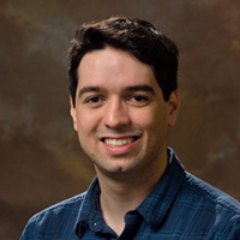Events on May 19, 2022

Ehsan Ban, Postdoctoral Associate, Biomedical Engineering Department, Yale University Presents:
Computational algorithms for tissue tearing and suturing: Applications in the propagation of aortic dissections and palliation of the blue baby syndrome
May 19, 2022 at 10:00am for 1hr
in person: Evans Conference Room 3780 WEB; click here for zoom link or use meeting ID 836 7657 3683 Passcode: 782422
Ehsan Ban is a Postdoctoral Associate in the Biomedical Engineering Department at Yale University. His research combines high-performance computing with patient imaging to study the propagation of aortic dissections and palliative surgery of congenital cardiac defects. Before joining Yale, he was a Postdoctoral Researcher at the University of Pennsylvania, where he applied models of fiber networks to study the mechanobiology of extracellular matrices. Ehsan earned his Ph.D. in Mechanical Engineering at Rensselaer Polytechnic Institute (RPI), where he developed computational models of biological fiber networks and biomolecules in affiliation with the Scientific Computation Research Center (SCOREC). Ehsan’s research at RPI was recognized with the best thesis award. In his free time, Ehsan enjoys biking and skiing.Abstract:
Biomechanical models have provided tremendous insights into vascular diseases and have the potential to aid in surgical planning. This presentation includes applications of high-performance finite element models in two areas: aortic dissections and the blue baby syndrome. Dissection is a deadly disease of the aorta in which the arterial medial layers dissociate, and blood enters the aortic wall. It has been the subject of experimental and computational studies. However, the fracture mechanical mechanism of tear propagation within the aortic wall remains elusive. We developed a computational algorithm for the propagation of tears in aortic tissue by pressurized fluid. The results indicated that the pressure required for delamination was inversely related to the size of the initial insult. Clinical decisions related to aortic dissection and rupture commonly include measurements of aortic diameter, inspired by the Laplace law. The application of this law is limited in vessels with non-circular sections. We, therefore, developed an extended form of the Laplace law for the estimation of wall tensions in non-circular sections and applied it to aortic measurements at the sinuses of Valsalva. The results suggested an underestimation of wall tension in common aortic measurements. We expect that future studies using the extended Laplace law will contribute to improvements in patient outcomes. The second part of the presentation describes computational models of vascular anastomosis in surgical palliation of congenital cardiac defects. Previous studies of systemic to pulmonary shunts reported a coronary steal when large grafts were used in the modified Blalock-Thomas-Taussig shunt procedure. But the role of graft stiffness in the determination of anastomosis orifice area and wall stress was not explored. We developed an algorithm for anastomosis formation that predicts the geometry of the anastomosis. It indicated the dependence of the orifice opening area on graft stiffness by a Hill-type function. The results have the potential to contribute to surgical planning related to systemic to pulmonary shunt procedures. In conclusion, these new insights from the computational models will be outlined together with their potential for future contribution to patient care.
Posted by: Deb Zemek




